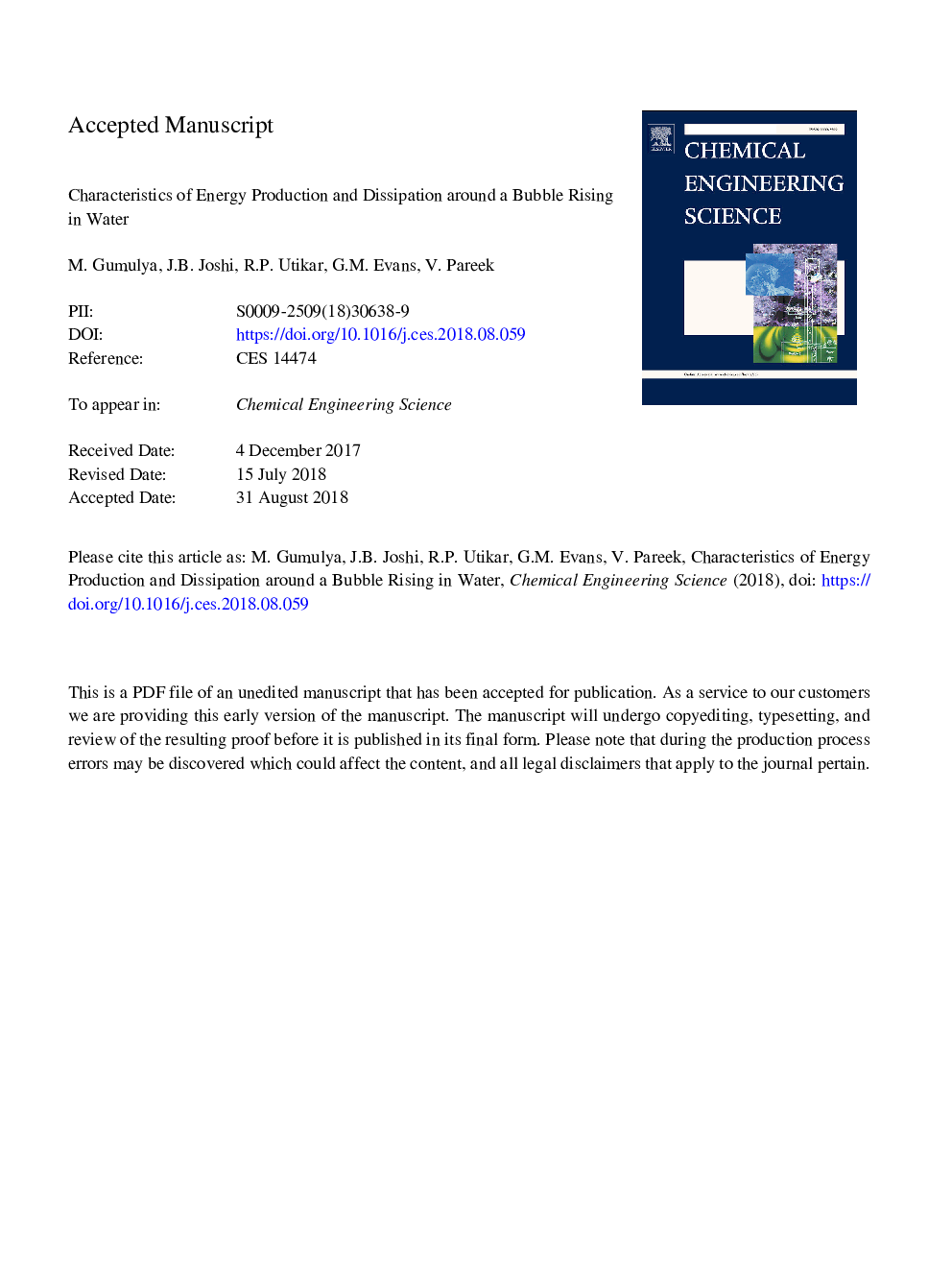| Article ID | Journal | Published Year | Pages | File Type |
|---|---|---|---|---|
| 10139043 | Chemical Engineering Science | 2019 | 38 Pages |
Abstract
A numerical simulation on the rise behaviour of a bubble rising in stagnant water at Reâ¯ââ¯800-1300 has been conducted. It is found that vorticity generated at the side of the bubble is transferred to the wake region, forming chains of hairpin vortices that are regularly shed and transported downstream. The resulting fluctuations in shape, trajectory, and rise velocity were found to conform well to experimental observations. The fluctuations in velocity resulting from the unsteady wakes were analysed through a fixed-frame approach about the centre of mass of the bubble. The average turbulent kinetic energy in the near wake region was found to be â1.4-4.8% with respect to the average kinetic energy of the bubble. The production of the turbulent kinetic energy was found to occur predominantly at the near wake region of the bubble, mostly as a result of normal and tangential gradients of the mean streamwise velocity. Interestingly, several regions of negative rate of energy production were identified, namely at the top and side interfaces of the bubble. Overall, the ratio of positive-to-negative production rate was found to be â2.4-3.1, resulting in a net conversion towards smaller-scale fluctuations from the mean flow. Small-scale dissipation was found to occur throughout the wake of the bubble.
Related Topics
Physical Sciences and Engineering
Chemical Engineering
Chemical Engineering (General)
Authors
M. Gumulya, J.B. Joshi, R.P. Utikar, G.M. Evans, V. Pareek,
